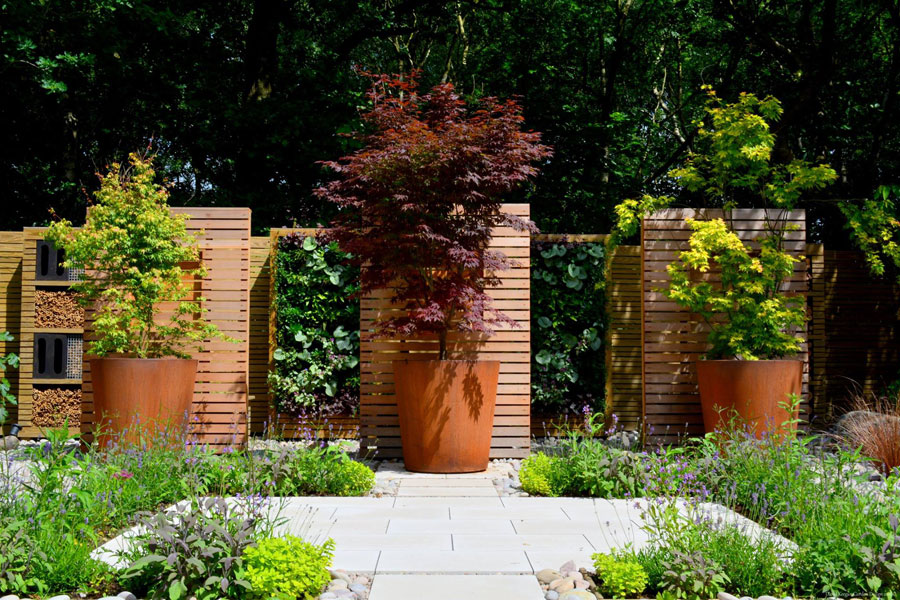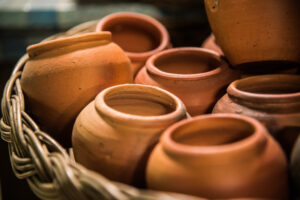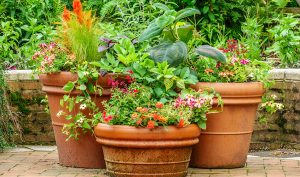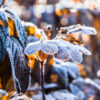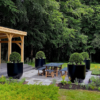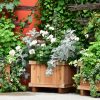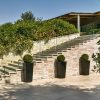Corten steel planters are among our most popular products, taking pride of place in the outdoor spaces of homes and businesses alike. But just why is this type of metal such a firm favourite?
Read on to discover the history of corten steel and how its benefits have made it a staple in gardens across the country.
How Corten Steel Got Its Name
Corten steel was created in the 1930s by the United States Steel Corporation in order to reduce the need to apply protective coatings to steel surfaces. Its high corrosion resistance and ability to withstand extreme weather conditions made it the perfect material for use on the country’s railroads.
A popular type of weathering steel, corten steel has since been used in various applications such as shipping containers, storage tanks, and even art installations. The word corten itself, sometimes written as cor ten or cor 10, is a fusion of its two most notable properties: corrosion resistance (cor) and tensile strength (ten).
What Happens When Corten Steel Is Exposed To The Elements?
When it comes into contact with moisture and air, corten steel forms a protective layer known as a patina. This weathering process, known as oxidation, is what gives corten (or cor 10) steel its unique orange brown appearance.
Although it might resemble rust, the protective patina that develops after continual exposure to the elements is actually a controlled version of corrosion that helps it last for anywhere between 25 to 100 years.
What Is Corten Steel Used For?
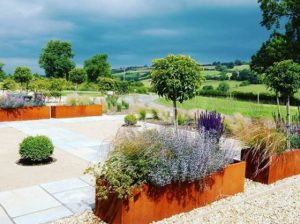
Much like the material itself, the use of corten steel in industry, architecture, and design has endured over time. Its durability, ability to thrive in harsh environments, and minimal maintenance requirements continue to make it a popular choice for bridges, railway cars, and roofing, as well as marine settings and, of course, planters.
In the UK, it is perhaps most recognisable for its use in the Angel of the North, a towering, hilltop-dwelling structure created by noted artist Anthony Gormley.
How Long Does Corten Steel Take To Rust?
When placed in outdoor settings, corten steel planters, troughs, and plant pots start to rust within a few weeks. They will develop a rust patina more quickly when exposed to alternating wet and dry weather conditions and tend to stabilise (stop changing significantly) in around 3-36 months, depending on the elements. You can support the weathering process by not painting or sealing your planter and applying a saltwater solution a couple of times a week.
As time passes, the appearance of corten steel planters will transform dramatically, shifting in colour from steely grey to a striking deep reddish-brown.
EXPLORE OUR CORTEN STEEL PLANTERS NOW
Do Corten Steel Planters Require Maintenance?
Even though they are famously low maintenance, corten planters do require some upkeep. The biggest thing to remember is not to let your planter get too wet, as this can delay the corten steel rusting process and age it prematurely. This can be done by adding drainage holes and ensuring that these aren’t clogged, to prevent water from pooling beneath the planter.
In the winter, care should also be taken to elevate the planter to prevent it from coming into contact with ice and snow.
Something else to be aware of, at least in the early stages of weathering, is a corten planter’s rust runoff. This can stain decking, paving, or other areas of your garden, so be sure to position the planter on a surface such as stone, gravel or soil, or use a riser to lift it off the ground.
What’s The Difference Between Corten Steel Planters And Patina Steel Planters?
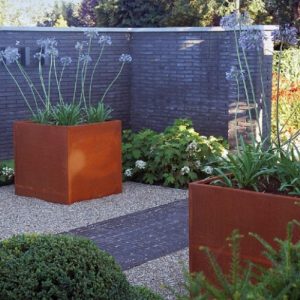
Even though corten steel develops a protective layer known as a patina, it is important to note that corten planters and patina planters refer to two different types of products.
As a patented group of steel alloys, corten steel is the longest-lasting form of weathering steel on the market, with planters made from this patented material lasting at least 25 years. Patina steel is a different alloy and a more affordable, cost-effective alternative to corten steel. Planters made from this material have approximately half the lifespan of those made from corten steel.
Despite this key difference, it is difficult for non-experts to make a proper distinction between corten steel and patina steel. Just know that whichever material you choose, you’ll be purchasing something made to last.
Explore A Wide Range Of Corten Steel Planters
At Taylor Made Planters, we are proud to offer a large selection of corten steel and patina steel planters to all our customers. Perfect for household gardens and business settings alike, our range includes a variety of popular planter shapes suitable for housing all manner of trees, plants, and shrubs.
Explore our patina and corten steel products today to discover something that fits your outdoor aesthetic. For a longer-lasting product, be sure to follow our corten steel maintenance tips, and feel free to contact us if you have any questions about our planters.


